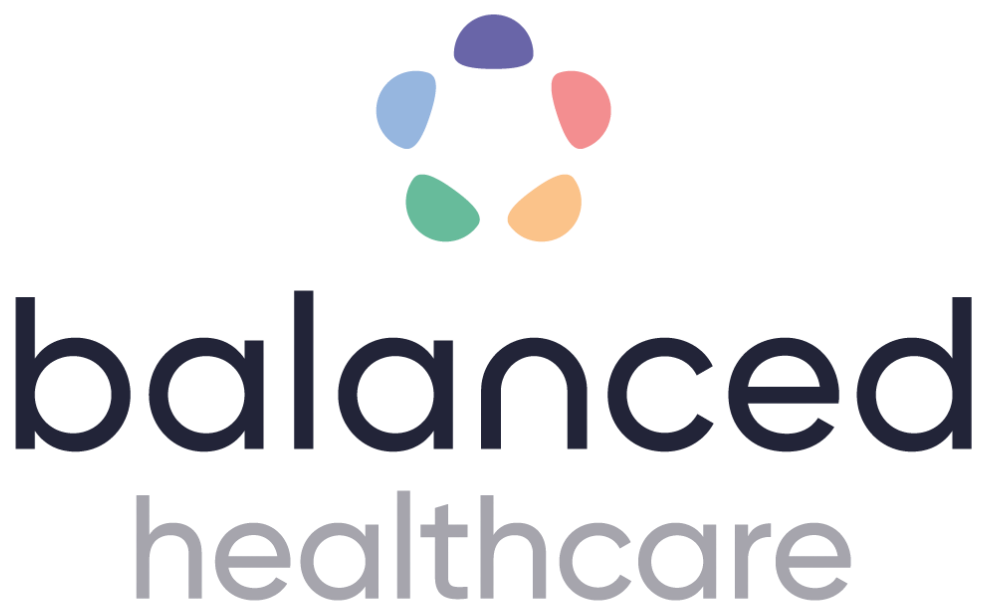13 Healthy Habits to Help You Control High Blood Pressure
May marks High Blood Pressure Education Month—a timely reminder that this condition often develops without symptoms but can quietly affect your health for years. The good news? Simple, consistent changes in daily habits can go a long way in keeping it under control.
In this article, we’ll walk through practical strategies anyone can start using today to support better heart health.
1. Maintain a Healthy Weight
Among all recommended lifestyle changes, maintaining a healthy weight consistently ranks as one of the most effective ways to control high blood pressure. According to the Mayo Clinic, even a modest weight loss of at least 5 lbs can help reduce pressure on arteries and improve blood pressure. Excess body weight increases the workload on the heart and contributes to elevated pressure within blood vessels.
Research published in Hypertension journal confirms that weight reduction can directly lower systolic and diastolic blood pressure in overweight adults. For most people, aiming for a healthy body composition or a BMI between 18.5 and 24.9 is the most recommended for better overall health.
Tools like waist circumference measurement can also offer a helpful benchmark; for men, keeping it under 40 inches and for women, under 35 inches is commonly recommended.
2. Dietary Approaches to Combat Hypertension
What you eat can be one of the most powerful tools in managing high blood pressure. A heart-healthy diet focuses on whole, nutrient-dense foods that support the health of your arteries, kidneys, and heart—often with results that rival medication.
DASH Diet
One of the most studied approaches is the DASH diet (Dietary Approaches to Stop Hypertension). Developed specifically to help lower blood pressure, DASH emphasizes meals rich in fruits, vegetables, whole grains, low-fat dairy, and lean proteins.
By steering away from saturated fats and ultra-processed foods, it helps reduce strain on the cardiovascular system. Many people see improvements in their blood pressure in just a couple of weeks after following it closely.
Mediterranean Diet
The Mediterranean diet is another well-researched option. It originated from countries bordering the Mediterranean Sea and is naturally high in healthy fats, especially from olive oil, nuts, and fish. Combined with an abundance of vegetables, legumes, and whole grains, it’s not only great for blood pressure but also offers protection against heart disease, inflammation, and even cognitive decline.
Plant-Based & Flexitarian
Plant-based and flexitarian diets also offer strong benefits, especially when they’re rich in fiber and low in processed food. These approaches naturally reduce saturated fat intake while increasing consumption of heart-protective nutrients.
Whether you follow a vegetarian plan or simply go meatless a few days a week, leaning into more plant-forward meals can significantly support your blood pressure goals.
Certain nutrients play a key role in keeping blood pressure in check:
- Potassium helps offset sodium’s effects and supports balanced fluid levels—find it in bananas, sweet potatoes, beans, and leafy greens.
- Magnesium aids blood vessel relaxation—look for it in almonds, whole grains, and avocados.
- Calcium supports vascular function and may help regulate pressure—sources include yogurt, tofu, and dark green vegetables.
- Omega-3 fatty acids, found in fatty fish like salmon, flaxseeds, and walnuts, help reduce inflammation and benefit overall cardiovascular health.
The key is to nourish your body with foods that support your heart—not just avoid the bad stuff. Building a routine around nutrient-dense, heart-loving meals can make a real difference in your blood pressure and overall well-being.
3. Reduce Sodium in Your Diet
Sodium reduction remains a cornerstone recommendation from every major health organization addressing high blood pressure. The American Heart Association suggests aiming for no more than 1,500 milligrams per day, though up to 2,300 mg is accepted in general dietary guidelines.
Research from the British Medical Journal highlights that reducing sodium intake over time correlates strongly with improved blood pressure control, especially in salt-sensitive individuals.
The challenge lies in the fact that most sodium in modern diets doesn’t come from the salt shaker, but hidden in processed, packaged, and restaurant foods.
Practical ways to reduce sodium intake include reading nutrition labels carefully, choosing low- or no-salt-added versions of pantry staples, and preparing meals at home where you can control ingredients.
4. Get Regular Physical Activity
Physical activity is one of the most effective and accessible ways to control high blood pressure. Aim for at least 150 minutes per week of moderate-intensity aerobic exercise—such as brisk walking, swimming, or cycling.
Regular movement strengthens the heart, enabling it to pump blood with less effort, which reduces the force on arteries.
A paper in the National Library of Medicine on the influence of physical activity on hypertension indicates that people who engaged in consistent aerobic exercise saw reductions in both systolic and diastolic blood pressure.
Systolic and diastolic blood pressure are two numbers used to measure the pressure of blood in your arteries:
Systolic pressure (the top number) shows how much pressure your blood is exerting when your heart beats.
Diastolic pressure (the bottom number) shows the pressure when your heart rests between beats.
Normal blood pressure for adults:
- Systolic: less than 120 mmHg
- Diastolic: less than 80 mmHg
So, a normal reading would be below 120/80 mmHg.
Strength training two days a week can also be beneficial, particularly when combined with aerobic activity. For those new to exercise, even short, 10-minute walks throughout the day can contribute meaningfully.
5. Limit Alcohol Consumption
While some research has suggested that moderate alcohol intake may have cardiovascular benefits, excessive or habitual drinking raises blood pressure and undermines heart health. According to the National Institute On Alcohol Abuse And Alcoholism, women should limit intake to no more than one drink per day and men to two drinks, depending on factors such as weight, health risks, and metabolism. In general, less is better.
Exceeding these amounts—even occasionally—can lead to sustained increases in blood pressure, especially when combined with other lifestyle risk factors.
Cutting back may lead to noticeable improvements in blood pressure control and overall well-being, especially when combined with a healthy diet and regular activity.
6. Quit Smoking
Smoking damages the lining of the arteries, leading to narrowed vessels and increased pressure. Though its direct impact on blood pressure may be transient with each cigarette, its cumulative effect on cardiovascular health is severe.
The CDC emphasizes that quitting smoking provides immediate benefits to blood circulation and heart function.
Within 20 minutes of quitting, heart rate and blood pressure begin to normalize. Over the following weeks and months, the risk of heart disease declines significantly.
For those living with high blood pressure, stopping smoking can amplify the effectiveness of other lifestyle strategies and reduce long-term health risks.
7. Manage Stress Effectively
Chronic stress contributes to elevated blood pressure by prompting hormonal responses such as the release of adrenaline and cortisol. These hormones cause blood vessels to constrict (tighten) and increase heart rate, which together raise blood pressure over time.
According to the Mayo Clinic, learning to manage stress is a key part of a broader strategy to control high blood pressure.
Relaxation techniques such as deep breathing, progressive muscle relaxation, and mindfulness meditation have been shown to help lower blood pressure in various clinical trials.
Journaling, spending time in nature, and engaging in hobbies can also serve as daily stress buffers. Over time, building consistent habits that promote mental calm may lead to measurable improvements in cardiovascular markers.
8. Monitor Your Blood Pressure at Home
Tracking your blood pressure at home can be a valuable part of a self-care routine, especially when working to manage hypertension through lifestyle changes.
Home monitoring is recommended to identify trends, triggers, and progress over time. It also provides useful data for healthcare providers when evaluating treatment effectiveness.
Validated, easy-to-use digital monitors are widely available, and tracking readings at the same time each day—typically morning and evening—can offer consistent insights.
9. Get Quality Sleep
Sleep is increasingly recognized as a factor that affects cardiovascular health. Poor or inconsistent sleep patterns can contribute to elevated blood pressure. Conditions like sleep apnea, in particular, are strongly linked to hypertension and often go undiagnosed.
Adults should aim for 7 to 9 hours of sleep per night. Research in the National Library of Medicine has shown that improving sleep hygiene—by establishing consistent bedtime routines, reducing screen time before bed, and limiting caffeine late in the day—can support blood pressure regulation.
For individuals with persistent sleep issues, a sleep evaluation may be warranted.
10. Cut Back on Caffeine
Caffeine's effect on blood pressure varies from person to person, but it can cause temporary spikes, especially in those who aren’t habitual consumers.
Individuals sensitive to caffeine may experience increases in blood pressure even after moderate consumption, such as one cup of coffee. For many regular caffeine consumers, this effect may be minimal over time.
The Mayo Clinic suggests checking your blood pressure 30 minutes after consuming caffeine to assess your sensitivity.
If readings rise by 5 to 10 mm Hg, it may be wise to reduce intake. Opting for decaffeinated beverages or switching to herbal teas can help lower overall stimulant exposure while still supporting hydration and focus.
11. Adequate Dietary Potassium Intake
Potassium is a dietary mineral that helps balance sodium levels in the body, reducing tension in blood vessel walls and lowering blood pressure. The NHLBI emphasizes potassium-rich diets as part of a healthy dietary approach to manage blood pressure. Potassium works by counteracting the effects of sodium, helping the body excrete excess sodium through urine, and easing strain on blood vessels.
The NIH Office of Dietary Supplements highlights that most people do not consume enough potassium, even though higher dietary potassium is associated with lower blood pressure and a reduced risk of cardiovascular disease.
Good sources of potassium include bananas, oranges, leafy greens, sweet potatoes, and beans. The recommended daily intake for adults is around 2,600 to 3,400 mg, depending on age and sex.
However, individuals with kidney disease or those on specific medications should consult a healthcare provider before increasing potassium intake.
A consistent diet with high potassium is associated with better blood pressure outcomes.
12. Avoid Processed and Packaged Foods
NHLBI recommends limiting ultra-processed foods (UPFs) such as packaged snacks, deli meats, frozen meals, and canned goods that often contain hidden salts, sugars, and additives.
Highly processed foods are among the leading contributors to excess sodium and preservatives in modern diets—both of which can elevate blood pressure over time.
Additionally, an NIH study found that when people had a high UPF diet they also ate more calories and gained significantly more weight as compared to when the same set of people were given a minimally processed diet, despite both diets providing the same number of calories.
Cooking more meals at home using fresh ingredients is a reliable way to reduce intake of these compounds. Choosing whole, minimally processed foods allows for greater control over blood pressure-friendly meals.
13. Track Your Lifestyle Habits
Although not emphasized consistently across major health resources, keeping a daily or weekly log of your meals, activity levels, sleep quality, and stress responses can help reinforce healthy behavior patterns.
Self-monitoring promotes accountability and can help individuals notice what works—or doesn’t—when trying to control high blood pressure.
Using a physical journal or digital tracking app allows you to review progress and make informed adjustments over time. It's also a helpful tool when working with healthcare providers who may use this information to tailor more effective treatment plans.
Manage High Blood Pressure, One Habit at a Time
High blood pressure doesn’t always require medication as the first step. There are many simple lifestyle changes you can make today that will lead to a healthier you tomorrow.
With Balanced Healthcare, managing chronic conditions like hypertension is a key part of our Direct Primary Care (DPC) services.
Patients benefit from personalized support, accessible care, and long-term prevention strategies that treat the whole person—not just the numbers. Explore the benefits of direct primary care services today for a healthier you.
FAQs
How long does it take to see results from lifestyle changes?
Many people notice improvements in blood pressure within a few weeks of adopting healthier habits. However, consistent long-term changes are more likely to yield sustainable results.
Can high blood pressure ever be reversed without medication?
In some cases, especially for individuals with prehypertension or mild hypertension, lifestyle interventions alone can bring blood pressure back to a healthy range. Regular monitoring and professional guidance are key.
Is high blood pressure always caused by lifestyle?
No. While lifestyle factors play a large role, genetics, age, and underlying medical conditions can also contribute. That’s why individualized care and screening are important.
Should I take supplements to lower my blood pressure?
Some supplements, such as magnesium or omega-3s, have shown potential benefits, but they should not replace evidence-based lifestyle changes or prescribed treatments. Always consult with your provider before starting supplements.
What is considered a healthy blood pressure reading?
According to current guidelines, a normal blood pressure is less than 120/80 mm Hg. Readings consistently above this may warrant lifestyle adjustments or further evaluation.


